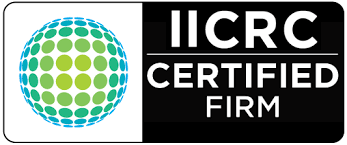Vehicle Biohazard Cleanup: Restoring Safety After Accidents or Crime Scenes
In the aftermath of vehicular accidents or crime scenes, vehicles often become contaminated with biohazardous materials such as blood, bodily fluids, and other potentially infectious substances. Addressing these contaminants promptly and effectively is crucial to restore the vehicle's safety and prevent health risks.

Understanding Vehicle Biohazard Contamination
Biohazardous contamination in vehicles can result from various incidents, including traffic accidents, violent crimes, or medical emergencies. Such events may leave behind pathogens that pose significant health hazards if not properly remediated. Common contaminants include bloodborne pathogens like HIV, hepatitis B, and hepatitis C, which can survive on surfaces for extended periods.
The Importance of Professional Biohazard Cleanup
Engaging professional biohazard cleanup services is essential for several reasons:
-
Health and Safety: Trained technicians possess the expertise and equipment to safely remove hazardous materials, minimizing the risk of infection.
-
Regulatory Compliance: Professionals adhere to local and federal regulations regarding the handling and disposal of biohazardous waste, ensuring legal compliance.
-
Thorough Decontamination: Specialized cleaning agents and techniques are employed to eliminate pathogens effectively, restoring the vehicle to a safe condition.
The Biohazard Cleanup Process
A comprehensive vehicle biohazard cleanup involves several critical steps:
-
Assessment: Evaluating the extent of contamination to determine the necessary remediation procedures.
-
Containment: Isolating affected areas to prevent cross-contamination during the cleaning process.
-
Removal of Contaminants: Safely extracting and disposing of biohazardous materials in accordance with regulatory guidelines.
-
Cleaning and Disinfection: Applying hospital-grade disinfectants to all impacted surfaces to eradicate any remaining pathogens.
-
Deodorization: Utilizing specialized equipment to eliminate odors associated with biohazardous materials.
-
Final Inspection: Ensuring the vehicle meets safety standards and is free from health hazards.
Selecting a Qualified Biohazard Cleanup Service
When choosing a biohazard cleanup provider, consider the following factors:
-
Certification and Training: Verify that technicians are certified and have received specialized training in biohazard remediation.
-
Experience: Select a company with a proven track record in handling vehicle decontamination.
-
Compliance: Ensure the service adheres to all relevant health and safety regulations.
-
Availability: Opt for providers offering prompt response times, as timely intervention is critical in biohazard situations.
Preventative Measures
To minimize the risk of biohazard contamination in vehicles:
-
Immediate Response: Address spills or accidents involving bodily fluids promptly to prevent the spread of contaminants.
-
Protective Equipment: Utilize appropriate personal protective equipment (PPE) when handling potential biohazards.
-
Regular Cleaning: Maintain routine cleaning protocols, especially for vehicles used in medical or emergency services.
In conclusion, vehicle biohazard cleanup is a critical process that ensures the safety and well-being of individuals by effectively managing and eliminating hazardous contaminants. Engaging professional services guarantees thorough decontamination, compliance with health regulations, and the restoration of the vehicle to a safe operational state.

















